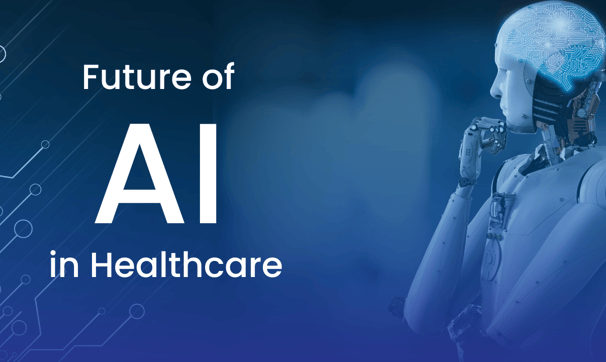AI Health Innovation in Imaging and Brain Chip Interfaces
AI HEALTHINNOVATIONAI


In the dynamic landscape of healthcare, artificial intelligence (AI) is proving to be a transformative force, particularly in medical imaging. With the emergence of AI-driven technologies like Diagonalize, there's a notable shift in how we interpret and analyze medical images, promising heightened diagnostic precision and improved patient care.
Diagonalize in Medical Imaging: Enhancing Precision and Efficiency
At the forefront of this AI-driven transformation is Diagonalize, an innovative technology leveraging deep learning algorithms to redefine medical imaging. By tapping into extensive datasets and sophisticated algorithms, Diagonalize empowers healthcare practitioners to interpret medical images with unprecedented precision and speed. Diagonalize streamlines the interpretation process from X-rays to MRIs and CT scans, resulting in swifter diagnoses and more accurate treatment plans.
Key Players in the Industry: Pioneering Progress
Prominent companies such as Aidoc, Zebra Medical Vision, and Enlitic are driving the Progress of AI in medical imaging. These industry frontrunners are at the forefront of innovation, continuously pushing the boundaries of medical imaging AI. Through their ongoing research endeavors, strategic collaborations, and unwavering commitment to excellence, these companies are shaping the future of healthcare delivery.
In recent years, the convergence of artificial intelligence (AI) and neuroscience has sparked remarkable advancements in brain-computer interfaces (BCIs). At the forefront of this intersection is Neuralink, a company founded by Elon Musk to develop high-bandwidth brain-machine interfaces.
Future Prospects: Navigating Forward
Looking ahead, the future of AI in medical imaging holds immense potential. As AI algorithms become increasingly sophisticated, we anticipate deeper integration with electronic health records, facilitating seamless data analysis and informed decision-making. Furthermore, the emergence of AI-powered virtual medical assistants can revolutionize radiologists' workflow, augmenting their capabilities and enhancing overall patient outcomes. However, as we chart this exciting course, we must consider AI's regulatory, ethical, and societal implications in healthcare, ensuring responsible and equitable deployment of these technologies.
Neualink's Mission: Bridging the Gap Between Humans and AI
Neuralink aims to create a direct interface between the human brain and computing devices, enabling seamless communication and interaction. By leveraging AI algorithms to interpret neural signals and facilitate bidirectional communication, Neuralink holds the potential to revolutionize healthcare, communication, and even human cognition.
Advancements and Test Patients: Tracking Neuralink's Progress
Neuralink has made significant strides in developing its brain-computer interface technology. Recently, the company announced the successful implantation of its devices in test patients, marking a crucial milestone in their journey. These test patients serve as pioneers, providing valuable insights into the safety and efficacy of Neuralink's technology.
The Promise of AI-Enhanced BCIs: Unlocking New Possibilities
The possibilities are vast, with AI pivotal in Neuralink's technology. AI algorithms can assist in decoding complex neural signals, enabling more precise control of prosthetic limbs for individuals with disabilities. Moreover, AI-powered analytics could revolutionize neurological research by providing insights into brain function and disorders.
Ethical Considerations: Navigating the Complexities
While the potential benefits of AI-enhanced BCIs are undeniable, ethical considerations abound. Questions regarding privacy, consent, and the potential for misuse of neural data must be carefully addressed. As AI algorithms increasingly interpret neural signals, ensuring this information's security and ethical use becomes paramount.
Exploring Philosophical and Religious Perspectives
From a philosophical and religious standpoint, the advent of AI-enhanced BCIs raises profound questions about the nature of consciousness, identity, and the human soul. Some may view these technological advancements as a form of transhumanism, blurring the lines between humanity and machines. Others may express concerns about the ethical implications of altering the human brain and its relationship to spiritual beliefs.
Conclusion: Navigating the Nexus of AI and Neuroscience
In conclusion, the intersection of AI and Neuralink represents a fascinating frontier in brain-computer interfaces. With AI technologies driving innovation and breakthroughs in neural signal processing, the potential for transformative impact is profound. As we navigate this exciting territory, it's essential to approach the development and deployment of AI-enhanced BCIs with careful consideration of ethical, philosophical, and religious implications. By doing so, we can harness the full potential of this technology to enhance human capabilities and improve lives while respecting diverse perspectives and values.
AI is poised to reshape the healthcare landscape, particularly within medical imaging. With groundbreaking technologies like Diagonalize leading the charge, we stand on the brink of a new era in patient care characterized by enhanced diagnostic accuracy, personalized treatments, and improved outcomes. As we embrace this transformative future, let us remain vigilant in leveraging AI for the collective good and ensuring its benefits are accessible to all. Together, we can harness the potential of AI to drive innovation and excellence in healthcare.